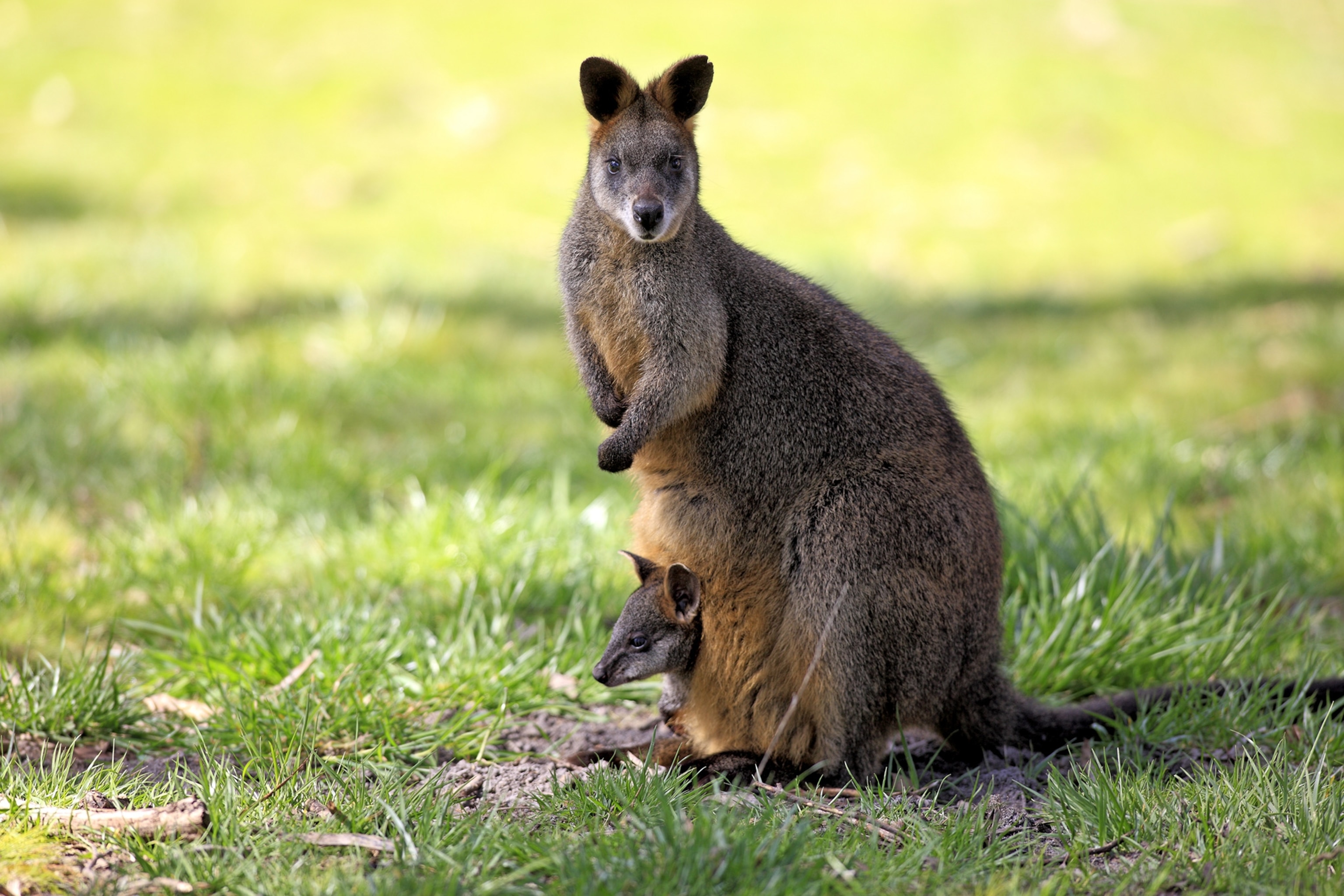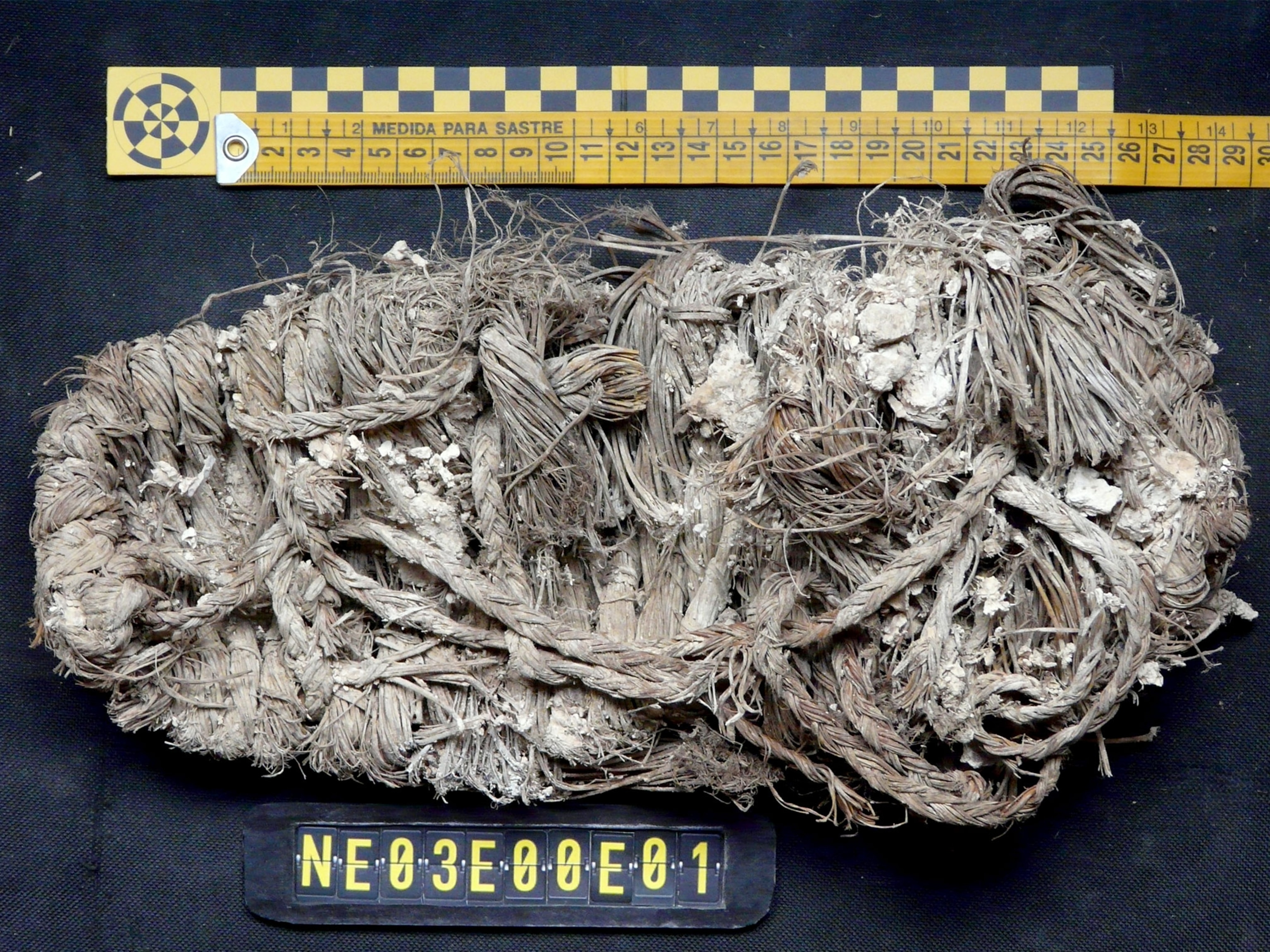Most mammals can become pregnant several times during adulthood, but for the vast majority, there is a healthy pause after each birth, while mothers nurse their babies. For some, of course, it’s normal to only have one or a couple offspring in a lifetime.
But swamp wallabies, small hopping marsupials found throughout eastern Australia, are far outside the norm: New research suggests that most adult females are always pregnant. As described in a paper published March 2 in the Proceedings of the National Academy of Science, the animals typically conceive one to two days before giving birth.
Like all marsupials, swamp wallabies (Wallabia bicolor) give birth to tiny, immature babies that crawl to a special pouch where they nurse on their mother’s milk. Some marsupials, like kangaroos, can mate and conceive about a day after birth, but not before, says Brandon Menzies, a study co-author and researcher with the University of Melbourne.
These wallabies are the only animal, besides the European brown hare, that can become pregnant while already pregnant. But the hares have distinct breeding seasons and are not continuously pregnant most or all of their adult lives, as female swamp wallabies are.
The study is important because “understanding the biology and endocrinology of reproduction in any species may have valuable lessons for human reproduction too,” says David Gardner, at the same university, who wasn’t involved in the paper.
How it works
Conception is typically impossible while a female mammal is pregnant. “There are a whole range of reasons why you don't want to conceive during active pregnancy,” Menzies says. Part of that is anatomical. Most animals have one uterus, or womb; if a developing embryo is already there, there’s no room for more. Marsupials, however, have two uteruses, each with their own associated ovary and cervix.
A second reason relates to the endocrine system. The hormones that nourish a developing fetus are different from those that typically allow for implementation of a fertilized egg after mating. (This is why many forms of emergency contraception in humans contain progesterone, for example, a hormone that normally supports an active pregnancy but which also prevents ovulation.) Menzies says they don’t yet know exactly how conception takes place in these swamp wallabies—only that it does.
The cycle begins when a female wallaby mates, in January or February. Already pregnant from the prior year, she gives birth a day or two later, and this baby climbs into her pouch for nursing. The newly fertilized embryo, also known as a blastocyst and consisting of around 80 to 100 cells, remains in the uterus, dormant, in a phase called “embryonic diapause.”
Meanwhile, the first baby continues nursing and growing. Around September, this baby, also known as a joey, is ready to leave the pouch, Menzies says. This is timed to coincide with the flush of green grass that comes with the southern hemisphere’s spring. (Related: Read about the “extinct” marsupial rediscovered in Australia.)
The joey gradually begins nursing less. Around December, the joey is weaned. This initiates the growth of the quiescent embryo, and month later, it’s born. By that time, the female has ovulated and mated again.
So much to learn
The researchers came to their conclusions by performing ultrasound scans on 10 captive swamp wallabies. They took images of the females at various times throughout the year and noted when they mated. They observed the presence of a dormant blastocyst in nine of 10 of them after mating, and while the second baby was already nursing in the mother’s pouch.
Gardner, who studies in vitro fertilization, says that a better understanding of embryonic diapause could be priceless.
“If we could resolve this complex process, we may not have to cryopreserve embryos, but rather keep them in stasis within the laboratory,” he adds. “There’s so much still to learn from marsupials.”






